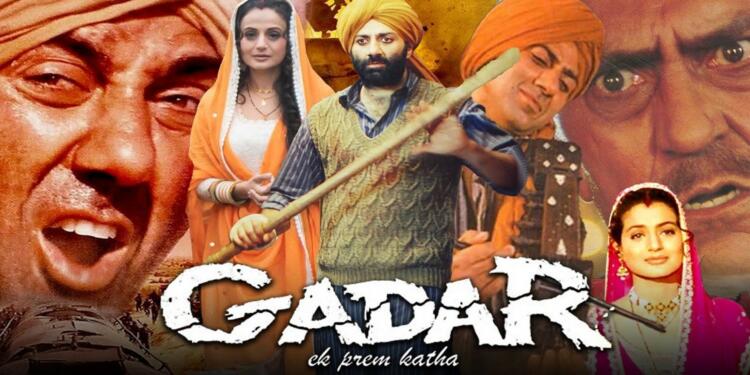Indian cinema, in its long and illustrious history, has seen its fair share of cinematic rivalries and controversies. Among these, the year 2001 was uniquely eventful, witnessing the clash of Ashutosh Gowariker’s “Lagaan” and Anil Sharma’s “Gadar” at the box office. In this context, the story of “Gadar” emerges as a remarkable example of a film that found its audience despite a seemingly hostile ecosystem and a fierce competitor.
Hurdles Everywhere!
The current climate of Indian cinema is more open to alternative narratives than ever before. Movies like “The Kashmir Files” and “The Kerala Story” have broken free from the confines of mainstream themes, making their mark at the box office. Such accomplishments, however, did not happen overnight. The genesis of the acceptance of alternative narratives can be traced back to the early 2000s, which paved the way for change.
Anil Sharma, known for his action-packed commercial hits like “Hukumat”, “Tahalka”, and “Elaan e Jung,” initially planned his new project to shed light on the conflict-ridden region of Kashmir. The protagonist was to be a Kashmiri Pandit, an underrepresented perspective in mainstream cinema. However, a conversation with Shaktiman Talwar altered the course of the movie.
Talwar told him the heart-wrenching tale of Boota Singh, set against the tumultuous backdrop of the Partition. Sharma, deeply moved by the narrative, decided to set his movie against the same historical event, aiming to depict a balanced and honest account, different from the ones that were widely portrayed.
Also read: Why Gadar 2 will be the winner of the August 11 Triple Clash?
While Indian cinema had seen movies revolving around the Partition before, these were often labeled as one-sided, even Hinduphobic, by many. Movies such as “Dharmaputra”, “1947: Earth”, and “Hey Ram” were criticized for their alleged bias. In contrast, “Gadar” film was a bold attempt to steer clear of the biases and offer a balanced portrayal.
“Gutter: Ek Prem Katha”
Creating the film was not without its share of challenges. Casting, for instance, was an uphill battle. After the initial rejection from Govinda for the lead role, Sunny Deol was cast. However, getting an actress for the role of Sakeena proved to be a daunting task. Leading actresses of the time, including Aishwarya Rai and Kajol, turned down the offer, adding to the complications.
When the hurdle of casting was finally crossed, another major obstacle lay in wait – distribution. No major distributor was willing to support the film, a crucial setback. This could have led to the shelving of the project if it hadn’t been for the intervention of Zee Studios, which agreed to distribute the film.
The day of release brought yet another challenge. “Gadar” was to compete with “Lagaan,” a film that was drawing significant critical acclaim. Critics rained praises on Gowariker’s work while concurrently trashing “Gadar.” The film even received derogatory labels like “Gutter: Ek Prem Katha.”
Furthermore, “Gadar” film also stirred up controversy among fundamentalists who were irked by the movie’s theme of interfaith love. Violent protests were staged throughout the country, with demands to ban the film. However, despite the hurdles and backlash, the audience’s response was a complete contrast.
Audience is the real jury
On June 15, 2001, as “Gadar” film hit the screens, the response was overwhelming. Audiences flocked to the theaters, causing such a surge in demand that exhibitors were compelled to request Anil Sharma to increase the screen count.
Also read: Gadar 2: Sunny Deol has a huge legacy to carry forward
Even today, “Gadar” film remains an exemplar of triumphant cinema, with over 50 million footfalls – an unparalleled achievement. The film’s victory marked a turning point in Indian cinema, demonstrating that compelling narratives, despite being alternative or unconventional, could find widespread acceptance and commercial success, even in the face of bias and controversy.
The tale of “Gadar” serves as a testament to the resilience of cinema and the power of a well-told story to overcome societal bias, critical skepticism, and the odds of commercial viability. It is an enduring reminder of the potential of film to resonate with the masses and create a lasting impact.
Support TFI:
Support us to strengthen the ‘Right’ ideology of cultural nationalism by purchasing the best quality garments from TFI-STORE.COM































